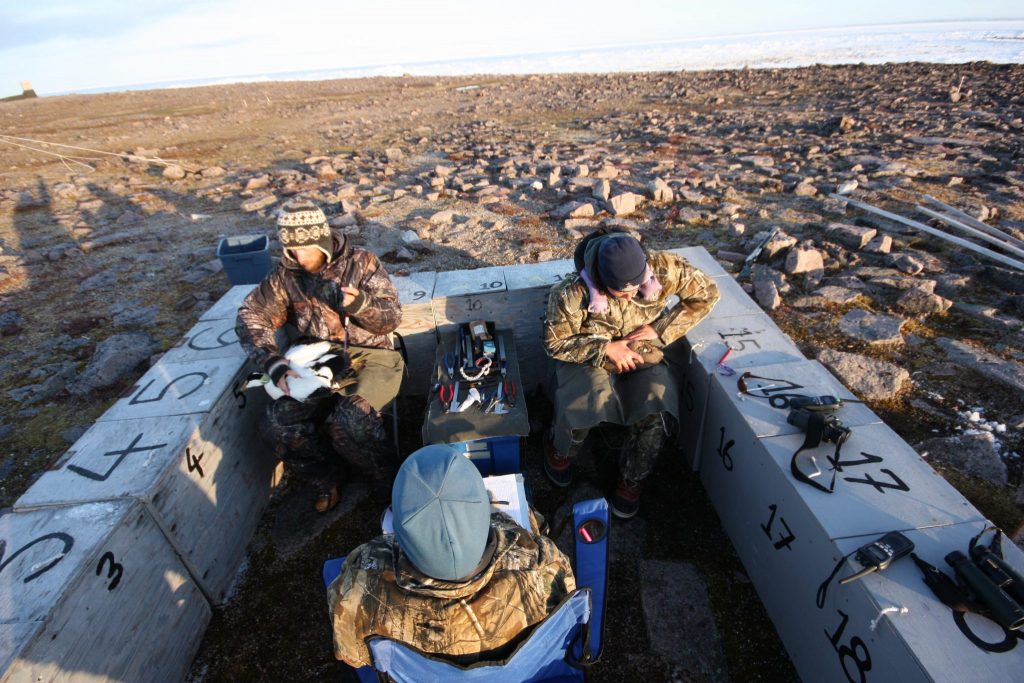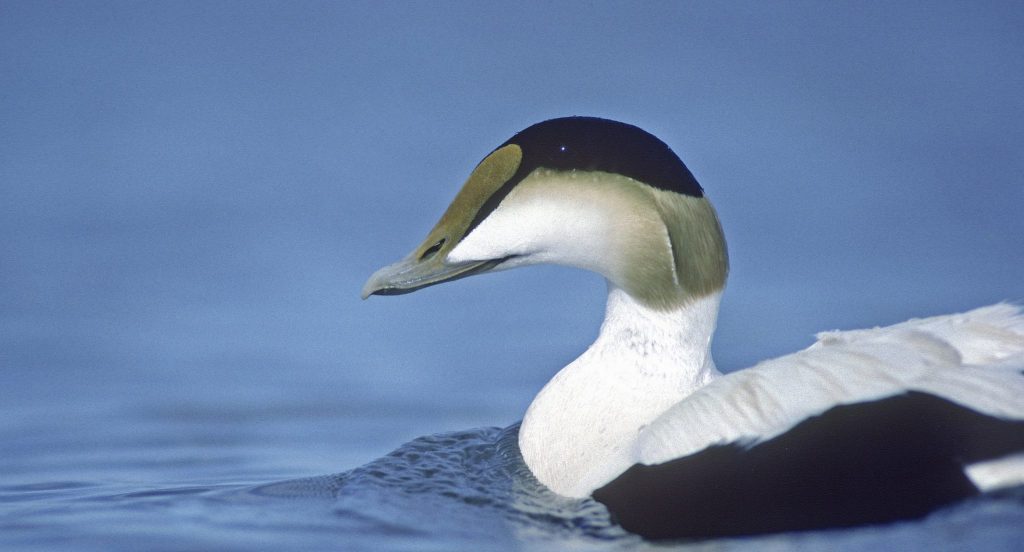Toxic traces
Small amounts of toxins can impact the health of an Arctic bird, says waterfowl biologist.
Predation. Extreme loss of habitat. Disease. These are all factors shown to have immediate, negative, impacts on waterfowl populations. But what about the little, less obvious things that undermine our health and well-being?
Jennifer Provencher explores this question in her research article, Implications of mercury and lead concentrations on breeding physiology and phenology in an Arctic bird.
Now a Post-Doctoral Fellow in Northern Research at Acadia University, Provencher completed this research as a PhD candidate at Carleton University.

Looking at the impact chemicals have on the health of waterfowl isn’t new. “What we can do in the lab is great—but it’s limited,” says Provencher, noting you can’t fully understand the impact contaminants have on a population unless you study them in the wild.
So that’s exactly what she did.
Provencher spent two field seasons (2013 and 2014) collecting blood samples and monitoring the health of common eiders on Mittivik Island, in northern Hudson Bay. Common eiders migrate to this community each spring, from waters off Greenland and Newfoundland.
As eiders landed at nesting grounds on Mittivik Island, researchers captured them in flight nets.
Dressed in Arctic camouflage, Provencher and a team recovered the ducks from the nets. They collected the first of two blood samples from female common eiders within three minutes. This sample allows researchers to measure the bird’s corticosterone (stress hormone) and immunoglobulin Y (antibody) levels.
“It’s important to collect that sample quickly, otherwise what we collect will show how stressed we’ve made the birds,” says Provencher.
From there, the researchers took the ducks to a temporary banding station where they were measured, weighed, banded and marked with temporary nasal tags. The researchers then took a second blood sample from each bird’s jugular vein for contaminants analysis, before they released them. “It’s quite the process,” says Provencher.
After gathering information from 190 common eider hens over two field seasons, Provencher took her data back to the lab to begin analysis. By looking for variations in the data, she discovered that even small amounts of lead and mercury impact the health and reproductive success of common eider hens.

Lead
“Lead had the biggest impact,” says Provencher.
Common eiders carrying small amounts of lead in their systems (below toxic levels) arrived later and often in poor condition to the breeding grounds. “Arrival date and condition are tightly connected to reproductive success,” says Provencher.
Previous lab research indicates high levels of lead contamination can impact a duck’s ability to fight disease and cause oxidative stress (when there’s too many potentially harmful free radicals in the system). This causes decreased energy and difficulty foraging.
Provencher hypothesizes birds in the wild, that are faced with environmental stressors (moult, predation), are less equipped to manage even trace levels of this toxin.
How did the lead get into the eiders’ bodies in the first place? “In a population, birds are probably exposed to a variety of sources,” says Provencher.
Lead is naturally occurring in the environment and can be trophically transferred to waterfowl. This occurs when lead is absorbed by microbes in the soil and travels through the food chain, until it’s eventually consumed by common eiders.
It’s also possible contaminated arctic ducks ingested lead shot that made its way into waterways. While lead shot has been banned for use in waterfowl hunting across Canada since 1999, Greenland only just recently prohibited its use. Provencher says some ducks may have been hit with lead shot and survived or swallowed a lead fishing weight.
“Regardless of the source, our results suggest that even at…below toxic concentrations, the consistent patterns of higher lead levels found in later-arriving females with lower body condition is suggestive of sub-lethal effects.”
Mercury
Mercury’s effect on common eiders is more complicated, says Provencher.
Naturally occurring, mercury is released into the atmosphere by forest fires and volcanoes. Human activities, like the burning of coal and fossil fuels, increase the amounts of mercury in our environment.
Once released, this toxin makes its way into the soil where it’s absorbed by microbes and like lead, trophically transmitted to common eiders.
Provencher found ducks with trace amounts of mercury in their systems consistently arrived to breeding grounds early and in good condition.
She has a theory.
Common eiders are in need of fuel. While consuming foods contaminated with mercury will have a negative impact on their health, the benefits (improved body condition) outweigh the negative side-effects.
To explain further, Provencher uses this analogy: “Imagine that we have a gum product that you can get vitamin C from. If you were really deficient in vitamin C… the benefit of chewing that gum might outweigh the negative impact it has on your jaw. But if you already have a ton of vitamin C, then you’re just hurting your jaw by chewing it.”
Short-term, mercury can reduce the number of eggs in a clutch (as shown in a 1970s lab study). To date, there’s no research exploring how mercury may impact waterfowl health or reproduction over long periods of time.
Mercury is a neurotoxin, so “It might not kill them but it could slightly alter brain connections, which could alter migration,” says Provencher.
“There are all these things that are happening that aren’t necessarily killing the bird, but they’re leading to lower reproductive success, and may lead to lower survival.”
And it’s this potentially huge impact small amounts of chemicals have on the lives of waterfowl that pushes Provencher to conduct her research in the lab…and the field.
Jennifer Provencher was the recipient of the IWWR’s Bonnycastle Fellowship in Wetland and Waterfowl Biology from 2014 to 2016. Her research on trace elements in common eiders earned her the 2016 Institute for Wetland and Waterfowl Research (IWWR) Student Publication Award. This award is given to raise awareness of the IWWR student program, reward students for successfully publishing their research, and to recognize publications that make a significant contribution to waterfowl and wetland research.



